Forgotten Secrets Beneath Greenland That Trump May Reactivate.
Ghosts Beneath the Ice: Is America Reviving a Cold War Secret Base in Greenland?
By Sweden Glow Arctic Frontline Analysis.
Ghosts Beneath the Ice: Is America Reviving a Cold War Secret Base in Greenland to Counter Russia and China in the Arctic?
As the U.S. Navy’s USS Newport nuclear submarine docks for the first time in Iceland, a powerful message echoes through the icy corridors of the Arctic: America is back—and it’s not just here to patrol, it may be here to reclaim buried power.
With Arctic temperatures warming four times faster than the global average, new shipping lanes and access to rare minerals are rewriting the geopolitical map. But the quiet move I believe to be capturing attention in close defense circles isn’t just climate, or commerce, put natural resources aside—it’s what lies under the ice. Hidden, long-forgotten, and now perhaps the most relevant on the shelf.
The Secret Beneath Greenland’s Ice
Buried 30 meters beneath the Greenland ice sheet is the decaying skeleton of Camp Century, a once top-secret American military base from the Cold War era. Officially built as a research outpost, its true mission was codenamed Project Iceworm—a daring plan that created sprawling network of tunnels capable of housing mobile nuclear missile launchers that could survive a Soviet first strike and fire back across the pole.
Positioned less than 3,000 miles from Moscow. During the Cold War, the frigid location offered the U.S. Army a more covert and convenient cover for its medium-range ballistic missiles, or MRBMs. It’s a city under the snow.
The U.S. never informed Denmark—Greenland’s sovereign authority—about the true purpose of the base. And ultimately, the project was relegated half way and tagged failed. The shifting ice made the tunnels unstable, and by 1967, Camp Century was quietly abandoned, leaving behind nuclear structures, toxic chemicals, and Cold War dreams frozen in place.
But as the Arctic melts and geopolitical tensions rise again, the U.S. may be looking to reactivate this subterranean asset—or at least its strategic concept—as part of a broader push to secure Arctic military presence against Russian and Chinese advance and established arctic base and encroachment.
No major outlet has explore this possibility yet, but the timing is conspicuous. The USS Newport News, bristling with Tomahawk missiles, docks in Iceland just as France unveils its own Arctic defense strategy, and as NATO scrambles to be relevant. Coincidence? Possibly. But history tells us the Arctic is rarely a place for coincidence.

Assembly of a Minuteman missile at Air Force Plant 77, circa-1960. (U.S. Air Force photo)
Arctic Heats Up: A New War Front Emerges in the Far North
In this context, the U.S. finds itself playing catch-up—but it’s moving fast. From Donald Trump’s controversial bid to purchase Greenland, to President Biden’s renewed Arctic infrastructure spending, the U.S. is signaling it won’t let rivals lock down the top of the world unchallenged.
Trump’s interest in Greenland, dismissed by many as bluster, may have concealed a deeper strategic instinct. Owning Greenland would have dramatically expanded U.S. Arctic presence and given Washington free rein to explore or even revive long-abandoned military assets like Camp Century. It may also explain the renewed attention on Arctic surveillance, drone development, and naval deployments in the region.
A 1960 planning document stated that the system was deployed within an extensive cut-and-cover tunnel network, offering protection for both personnel and missiles from harsh weather and, to some extent, enemy strikes. The setup was considered resilient against all but the most massive attacks, with the majority of the force still capable of being launched. By using concealment and varying deployment patterns, the design aimed to prevent adversaries from effectively targeting the system’s most critical components.
Also Read

Denmark Reconsiders; We Can Negotiate on Greenland, But …
Strategic Minerals, Strategic Advantage
One unspoken driver in this Arctic chess match is access to rare minerals, many of which are believed to lie under Greenland’s retreating ice. With Greenland often hesitant to issue mining licenses—citing environmental and sovereignty concerns—the pressure from powers like the U.S. and China has grown more subtle but no less intense. Control of these resources could define future technological dominance, from weapons systems to clean energy.
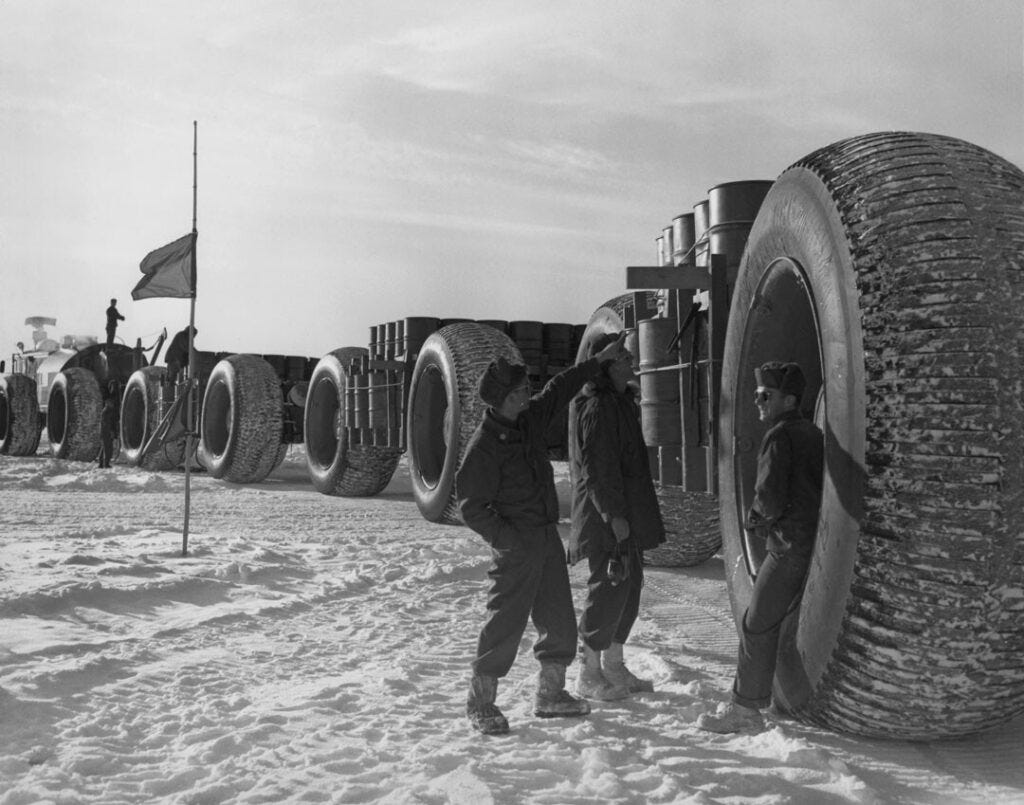
U.S. soldiers supplying Camp Century. (U.S. Army.)
From Forgotten Base to Future Front Line?
The reactivation of Camp Century remains shrouded—but it would not be unprecedented. The U.S. has a long record of returning to dormant bases when the strategic winds shift. The Arctic is no longer a frozen frontier—it’s an active battleground for control over critical resources, military positioning, maritime and trade routes, it’s the new “Strait of Hormuz.”
The U.S. Navy’s recent moves, combined with NATO’s surge in Arctic-focused operations, and the re-emergence of France as a military player in the region, hint at a broader Western awakening. And perhaps beneath Greenland’s thickening meltwater lies not just toxic waste—but a dormant piece of military infrastructure that could be reimagined for a new era of global confrontation.
As the Arctic melts, its secrets are surfacing. And the scramble for the top of the world is no longer theoretical—it’s unfolding now, submarine by submarine, base by base, icebreaker by icebreaker. What lies buried may soon become the foundation of the next global standoff.
Thanks for reading, kindly subscribe and support SR Team.
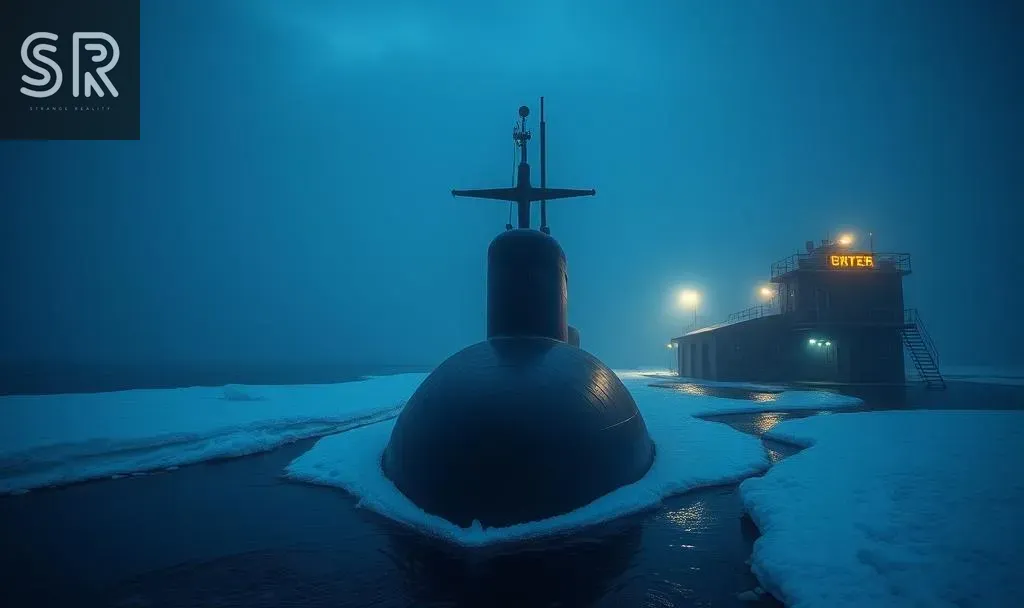





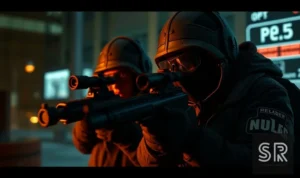
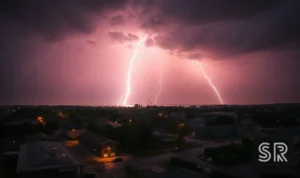


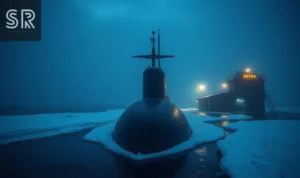

Post Comment